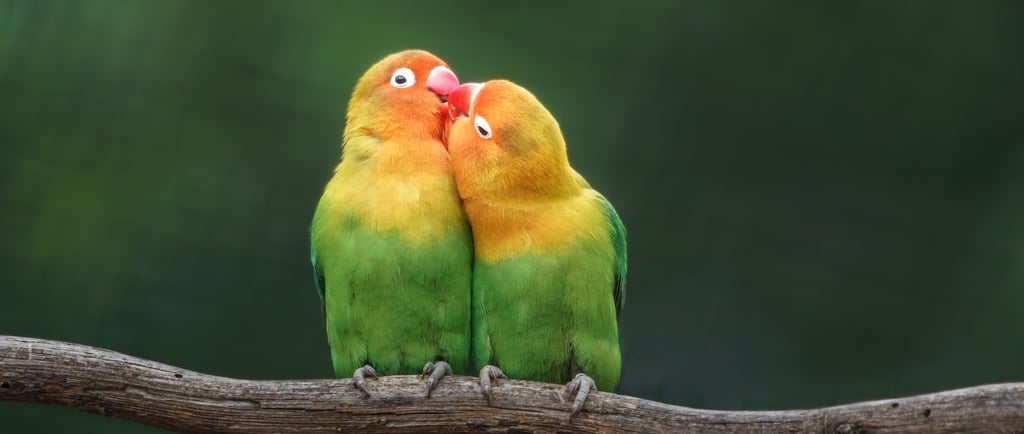💕Tiny Birds with Big Hearts and a Long History 🐦 The Lovebirds
Wellcome into the marvelous world of animals with the Animal Story Folders 🦝🦋🐾, my favourite material found in the Biology chapter Introducing Animals! 🌿 These folders are designed to ignite curiosity and prepare children for independent research. Through engaging oral presentations and beautifully organized folders, children explore essential topics like animal names, habitats, diets, physical features, reproduction, life cycles, and predators. This material provides a foundation for critical research skills while fostering a deep connection to the animal kingdom. Whether it’s uncovering the secrets of a raccoon’s night vision 🦝, a butterfly’s life cycle 🦋, or the survival tactics of a snow leopard 🐆, these folders encourage children to ask questions and seek answers.🐾📚
BIOLOGY STORIES
2/14/20252 min read


Imagine a warm, sunny forest filled with the cheerful chatter of small, colorful birds. Perched close together on a branch, two birds sit side by side, gently preening each other’s feathers. These are lovebirds (Agapornis), famous for their strong bonds and loving nature! 💕🐦
These cute colourful small parrots, usually 12–17 cm (5–7 inches) long, with bright feathers in shades of green, yellow, orange, and blue 🌈. Their name comes from their deep connection with their mates—once they find a partner, they stay together for life! They show their love by snuggling, feeding each other, and chirping sweetly.
Lovebirds have been around for millions of years! 🦴 Scientists recently discovered fossils of an ancient lovebird species, Agapornis longipes, in South Africa’s Cradle of Humankind, a site famous for early human fossils. This prehistoric lovebird lived 2.5 million years ago, at the same time as some of our earliest ancestors! Unlike today’s lovebirds, which mostly eat seeds and fruits from trees, Agapornis longipes had longer legs, which may have helped it forage for grass seeds on the ground 🌾. Even though the environment has changed, lovebirds still thrive in Africa today, showing their incredible ability to adapt over time.
Native to Africa and Madagascar, modern lovebirds live in forests, grasslands, and savannas 🌿. They are highly social and live in small flocks, flying together in search of food like seeds, fruits, and flowers. With their short, strong beaks, they can easily crack open tough seeds and nuts 🥜.
Lovebirds are also playful and intelligent! In the wild, they use their beaks to explore, build nests, and even play with twigs or leaves 🍃. Pet lovebirds enjoy solving puzzles and playing with toys, showing just how clever they are.Many cultures see lovebirds as symbols of devotion, happiness, and lasting love ❤️. With their bright feathers, cheerful personalities, and strong bonds, lovebirds truly live up to their name! 🐦✨
📜 Scientific Name: Agapornis
📏 Order: Psittaciformes
🌳 Family: Psittaculidae
📐 Average Size: 12–17 cm (5–7 inches)
⚖️ Average Weight: 40–60 grams (1.4–2.1 ounces)
🕰️ Lifespan: 10–15 years in the wild, up to 20 years in captivity
✨ Unique Feature: Deep pair bonds and affectionate behavior
Let’s Explore More in This Animal Folder About Lovebirds!
Now that we’ve discovered so many amazing things about lovebirds, I wonder—what’s your favorite animal? 🐾 Maybe it’s one you already know a lot about, or perhaps there’s an animal you’ve always wanted to learn more about.
You can use what we’ve done today as your guide to create your very own animal folder or booklet 📚! Think about including details like the animal’s name, where it lives, what it eats, its unique features, and its predators. You can add drawings, fun facts, or even tell a story about your animal!
When you’re done, you can share your folder or booklet with us. We can all learn something new from your research, and you’ll be the expert on your favorite animal! 🌍✨ So, what animal will you go on an adventure research with next?
After introducing one animal folder and demonstrating how to work with the cards in the folder—discussing what can be seen in the photos, reading the text cards, and matching them to the correct images. I will point out the rest of the animal folders, usually 4–5 additional folders with different animals . They will have the opportunity to read the kickoff stories, to examine the photos, read the text cards, and match them on their own, deepening their understanding through their independent explorations with this material in the Biology shelf. This approach fosters observation, reading, and research skills while allowing each child to follow their own interests and creativity.
With Montessori joy,
Vanina 😊

